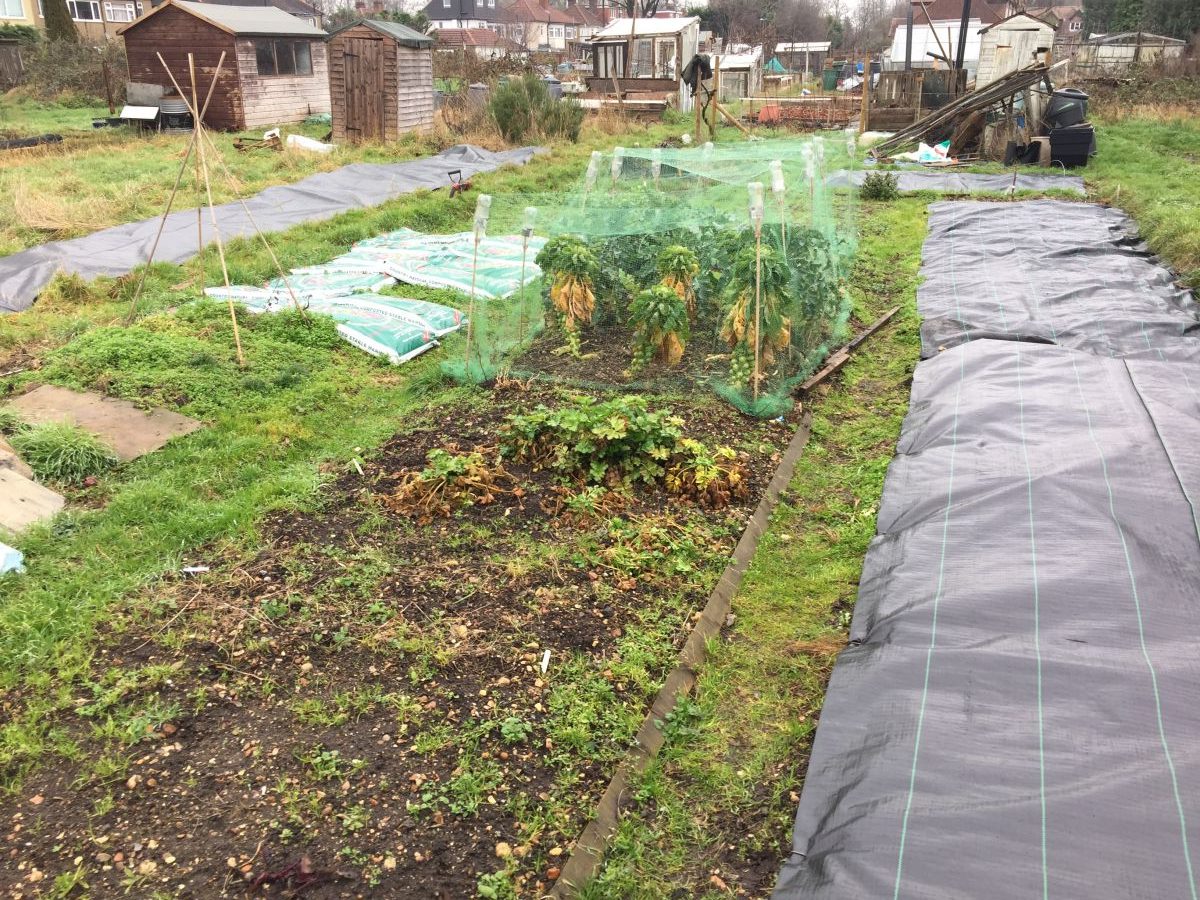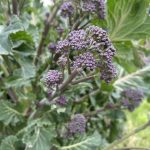Month 13: my allotment has expanded a bit this year as I’ve taken on some unused adjacent plot. This is thick with grass and other weeds so I’m using weed suppressant membrane to bring it under control with less effort. It may not look pretty, but it works.
Last year when I took on my new allotment I hand-weeded the entire plot using a hand fork. This was really enjoyable and worked wonders, removing many of the perennial weeds. However there were two problems: first, it did take quite a few days to do and second, in spring the bare soil was the perfect bed for sprouting weed seeds.
This year I have covered some of my existing beds and ‘beds to be’ on the new land with 2m wide weed suppressant matting (see photo above and below). The idea is that the membrane blocks light (although allows movement of water) which prevents the seeds germinating and will slowly kill any existing or germinating weeds while it’s in place. This is very effective.

I’ll remove the membrane when I am ready to plant in spring, so around March or April when the weather is warming up and frosts have passed. I’ll still have to hoe and hand weed of course, but I will have saved time prior to the growing season. Throughout the growing season, the membrane can be placed over beds waiting to be used.
Weed suppressant membrane is quite expensive at about £20 per 2m wide x 20m long pieces so I can’t afford too much and will need to look after it carefully for future years. I hope to get a good few years of use out of all of it.
Admittedly, it doesn’t look particularly good and is easily torn if you aren’t careful. I’ve placed some over my Dahlia bed and one of the short stems had ripped through it within a week, so watch out for sticks, stems or other sharp points. Our allotment has foxes running all over it too, so I just hope they don’t play havoc with it.
Apart from the cost and aesthetics, I can’t see any major drawbacks with using the membrane for controlling weeds. If you have lots of perennial weeds like bindweed and ground elder, you’ll of course still need to dig these out by hand, use a weed killer or leave the matting in place for at least 12 – 24 months to fully weaken and kill the plants beneath.




I agree fully,most of my plot,is covered,iv manured some beds and covered till im ready in spring,it makes life easier for us as gardeners and difficult for the weeds.
Glad you do the same Antony, if it works well it sure beats digging! I reckon next year I can make the plots much neater too.
Just be careful with the cut ends or any holes that start to appear, the weave frays and then you get strips of it coming free, and you will be finding it for years to come……. BUT Duct Tape comes to the rescue yet again, seal of the cut ends or repairs with some tape and it will save you future hassle. I did try using an old taurpalin that protected the greenhouse base, but that allowed too much light through so go with the membrane, its worth it……
Thanks for the tips Roy, this is really helpful. I have one tear already so will patch that with some duct tape
I’m interested in how it fairs this spring as some is laid on bare beds from last year while another strip has been added over the top of established wild grass in an attempt to kill it over the coming months.
We grow most of our crops through weed control fabric which we mulch with compost or bark chippings. The fabric is cut differently tp accomodate different crops and the sheets rotate with the given crop. It works well.
Thanks Sue – that’s really useful to know you do similar and it works for you. That’s interesting about using it to grow crops through. That would certainly reduce the weeding involved. I might give this a go on some crops, such as Asparagus where it’s a pain to weed.